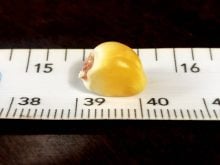Research using tissue samples from corn fields is not a new concept, but a recent sampling study has uncovered interesting insights.
The Corn Era Project has revealed shifts in production, including differences between 1980s hybrids and those of today. The goal of the project was to understand what’s changed in physiological terms when comparing modern hybrids with earlier hybrids.
Why it matters: Modern corn hybrids are gaining yield, which affects nutrient recommendations for the crop.
Read Also

The forced Japanese-Canadian farmers of the Second World War
Manitoba’s sugar beet farms drew on displaced Japanese-Canadians from B.C. during the Second World War
Tony Vyn, a retired department of agronomy professor at Purdue University, talked about the Corn Era Project at the Ontario Agricultural Conference in Ridgetown earlier this year. The project was a three-year study that also involved researchers from Iowa State University, including Sotirios Archontoulis and a team of graduate students.
“We understand reading your father’s hybrids is a lot different than reading today’s hybrids,” said Vyn.
In the project, 80 hybrids were examined: 40 with 103-day maturities and 40 in the 111-day class.
“I realize most of you aren’t growing that kind of maturity. Perhaps some of you are growing 103 if you’re in the Kent-Essex area,” said Vyn.
“But what we found in terms of the changes in these hybrids mirrors what’s going on in earlier-maturing corn hybrids, whether you’re growing a 95-day hybrid or a 100-day hybrid. Those hybrids are increasing in yield at the rate of about two bushels per acre per year, with 111 gaining a little bit more than the 103-day hybrid.”
He said modern hybrids are producing more corn per unit of nitrogen, which should affect nutrient recommendations.
What’s changed in leaves?
From Vyn’s perspective, the main conclusion about modern hybrids is that leaves appear faster, and it takes less heat to bring on a new leaf. That speeds canopy closure with the same number of leaves, yet also hastens silking and grain-fill periods, so there’s more of an overlap in the flowering period and at the end of the vegetative period.
“That’s especially true because in this flowering period, the stalk is still getting thicker and heavier,” said Vyn.
“The leaves are still expanding at the top and we’ve got an ear that’s pushing out a thousand silks. Another change in the leaves of modern hybrids is that they’re steeper than before and it’s most evident at the top of the plant.”
Plant density also plays a role in leaf architecture. Higher densities push the ear zone leaves an average of six degrees steeper than at lower densities. That will affect the decision on which leaf to sample for nutrient analysis.
Vyn cited a robotic sampling unit developed by engineering colleagues. They compared readings taken from inside and below the canopy to those from above, using red-blue-green and normalized differentiated vegetation index readings, gathered via drones.
“The question is if you’re trying to read corn leaves today, are you better off to use an image analysis above the canopy or are you better off to have a robot that’s looking from the bottom up?” posed Vyn.
“My experience is it’s very difficult to tell differences in nitrogen status from above the canopy.”
Working with 135 lb. per acre of N versus 260 lb., Vyn determined there was a 60-bushel yield difference. However, it was not possible to tell that from an image above the canopy, at least until it was too late to do anything to increase yield.
The GPS-guided robot was useful at taking samples from specific leaf heights and at different points in a field. For the Corn Era Project, however, tissue samples were gathered by hand at various stages during vegetative or reproductive phases.
“Typically, we based it on 10 to 20 plants per plot in order to show there was a very large effect of nitrogen on corn yields,” said Vyn.
“The one conclusion we can make (from densities of 20,000 versus 36,000) is that it doesn’t matter whether it’s the eighth leaf, 11th leaf, ear leaf or the top leaf, the nutrient concentration in the higher density is always going to be significantly lower. In this case, it’ll be by about a quarter per cent of nitrogen.”
In other words, if someone cites two and a half per cent nitrogen at 36,000 plants per acre, it’s going to be more difficult to get that particular concentration at higher densities.
“The other comment I want to make is that there is no difference for nitrogen between the eighth leaf and the top leaf at the V12 stage,” added Vyn.
This can apply to another experiment measuring three nitrogen rates. Taking samples from the eighth leaf and top leaf at V12, there’s no difference in leaf concentration for 135 versus 215 lb. at any growth stage.
Vyn said relying on the ear leaf at R1 won’t provide the necessary indication of whether to apply another 40 or 50 lb. of N to boost yield by another 35 bu./ac.















